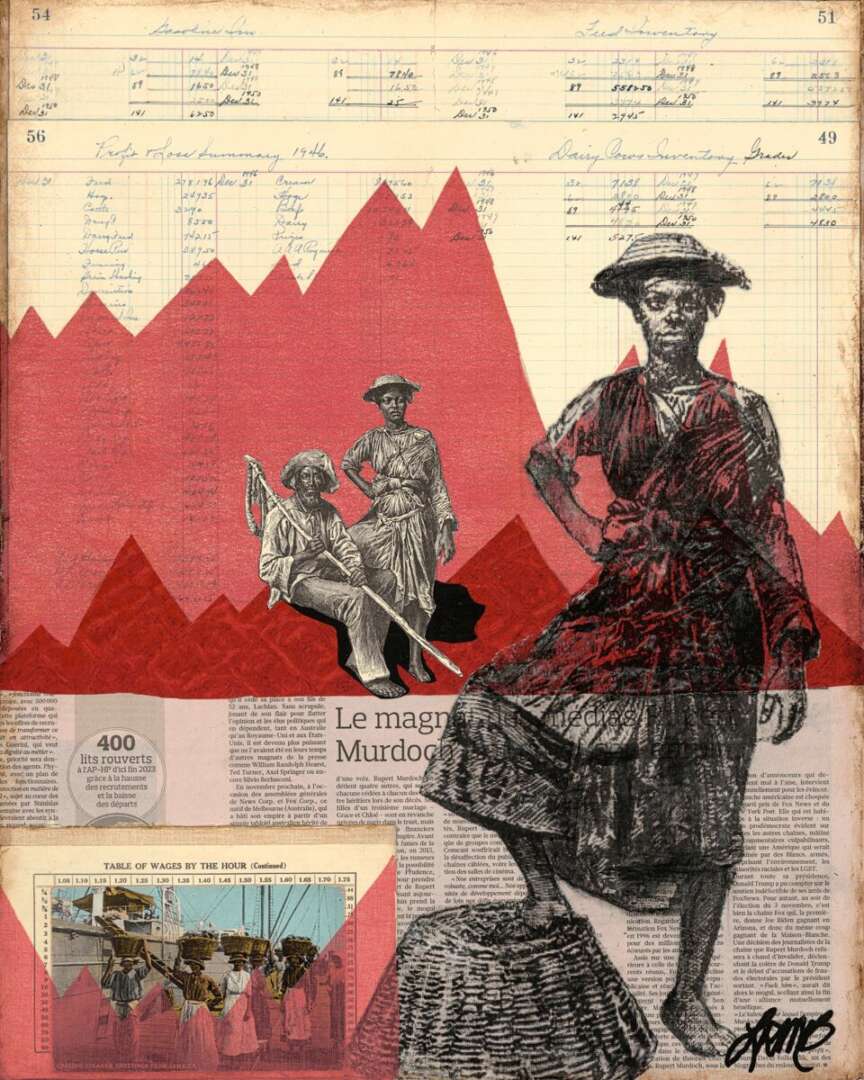We caught up with the brilliant and insightful Lisa Myers Bulmash a few weeks ago and have shared our conversation below.
Lisa, looking forward to hearing all of your stories today. We’d love to hear about a project that you’ve worked on that’s meant a lot to you.
Although I’ve lived in Washington state for most of my adult life, it took years to feel like a local. When I became an artist parent, that feeling expanded into a serious concern for my children’s safety.
Those two issues became the foundation for a solo exhibition at the Northwest African American Museum in Seattle. “You’re Not From Around Here, Are You?” featured collages, assemblage sculptures, and altered books. The works explored themes of belonging (and the dangers of not belonging) as well as the definition of the word “home.”
That show was special to me because I created all the programming as well as the artworks. I’m currently working on plans for another solo show; stay tuned.


Awesome – so before we get into the rest of our questions, can you briefly introduce yourself to our readers.
I began my artistic career by hand-making greeting cards, and attending art retreats when I could spare the time. I’ve since gone on to make pieces that are now held by public and private art collections. These include collages, assemblage sculptures, and altered books.
At first glance, it may seem that my work is obsessed with the past. While it’s true I often use aged materials, it’s not to glorify the past but to emphasize history’s continued influence over the present. Everything has a backstory, much of it connected to race. Part of my role as an artist is to make these narratives visible. If you value narratives told by people who are sometimes heard, but not often listened to, my work is for you.
My art is meant to be lived with, but it’s more than just something to hang over the couch. It’s rich in details that reveal themselves over time, like a story told in installments.


What do you think is the goal or mission that drives your creative journey?
I want people to see that we are all connected, like it or not. My goals are to reveal where these intersections have limited the potential of marginalized people, and to honor their triumphs. I choose to center African American and female experiences, to expand the classical practice of using an individual narrative to illuminate the general human condition.
I’m well aware I can’t compel a more privileged viewer to change their worldview. I just hope I can make it more difficult to un-see what needs to be changed.


We often hear about learning lessons – but just as important is unlearning lessons. Have you ever had to unlearn a lesson?
For most of my life, I’ve been a very independent person who prefers to do things herself. I had to unlearn that habit and not only accept help when offered, but also to ask for it.
There was a time when I participated in art festivals that required me to set up my own booth. I was able to load and unload my equipment and artwork myself, and it felt good to accomplish those tasks by myself. By the second festival, however, I realized my insistence on doing things by myself wasn’t sustainable. It took me longer to set up and break down my booth than most other vendors. Worse, doing all the work myself meant I was often too tired to return to my studio to make new work. The worst part was realizing I had done this harm to myself by not asking supportive friends to help me.
So after I was accepted into an outdoor festival, I asked other artists for their assistance. One lent me a tent to protect me and my work from the elements. Another helped me set up that tent and my booth walls — just before it started to rain heavily. Their support was critical in saving me time and saving my inventory from water damage.
Contact Info:
- Website: https://www.lisamb.com
- Instagram: https://www.instagram.com/_lisa_mb_/
- Facebook: https://www.facebook.com/lmb.artist/


Image Credits
Image credits: Lisa Myers Bulmash, Bellevue Fine Art Reproduction


